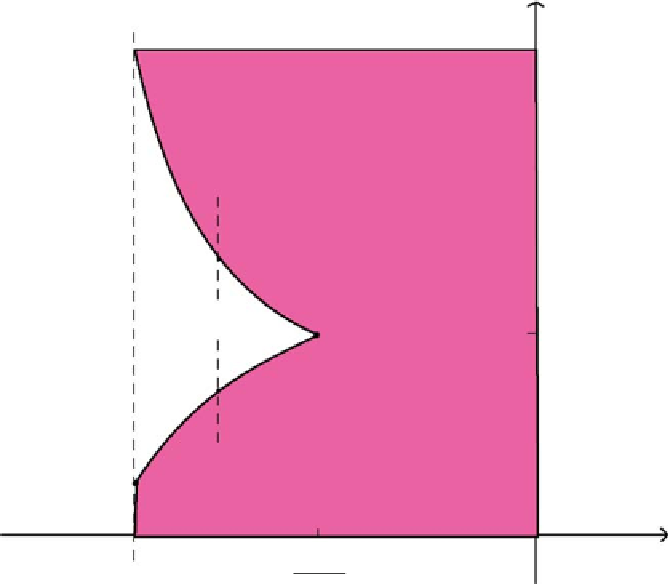Chemistry Reference
In-Depth Information
aT
(
aT
)
*
2
−8
1+
Nh
(
aT
)
*
1
r
−1
8
8+
Nh
−
Fig. 5.3
The continuous time model with symmetric firms and misspecified demand. The stability
region (
shaded
)inthe.r;aT/ plane. The parameter r is the slope of the reaction function at the
steady state, a D ˛
0
.0/ and T is the time lag in the weighting function. Notice how stability is lost
then regained as aT increases along the
dashed
vertical line. Hopf bifurcations may occur at the
points .aT/
1
and .aT/
2
where .aT/
1
<.aT/
2
. The equilibrium is unstable if
.aT/
1
<aT<.aT/
2
:
8
Nh
,
then the equilibrium is asymptotically stable with small and large values of aT .
With fixed such values of r,ifaT is gradually increasing from a very small value
and crosses .aT/
1
, then stability is lost. The instability holds until the value of
aT reaches .aT/
2
, and after crossing this value stability is regained. We will next
show, that at these critical points Hopf bifurcations occur. Select T as the bifurcation
parameter similarly to the full information case. Then the eigenvalues are functions
of T ,so
D
.T/. At the critical values of T , the inequality (5.41) becomes an
inequality, so the cubic equation (5.40) can be rewritten as
The stability region is shown in Figure 5.3. Assume now that
1<r<
8
C


Search WWH ::

Custom Search